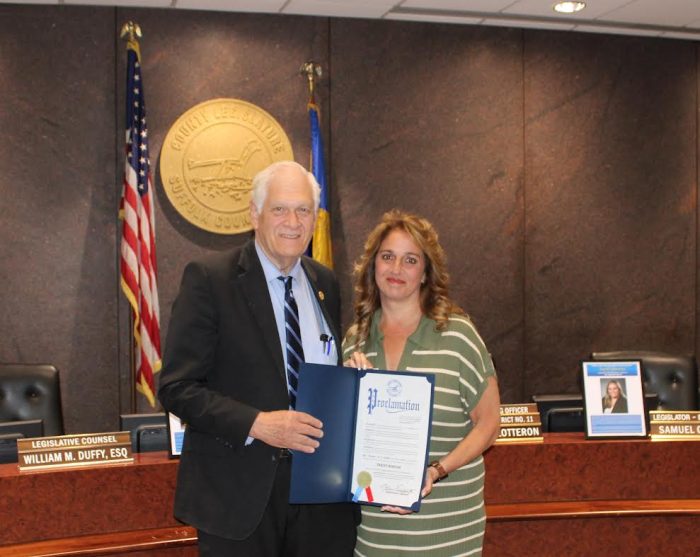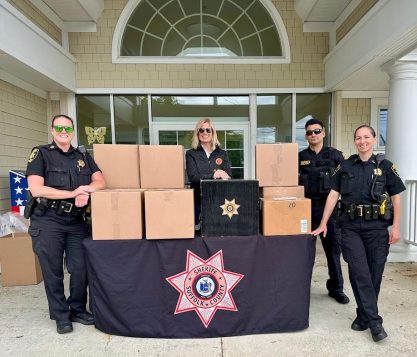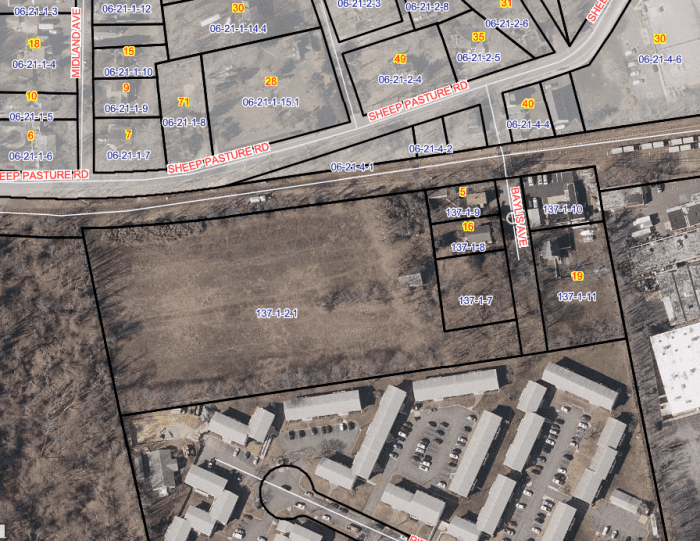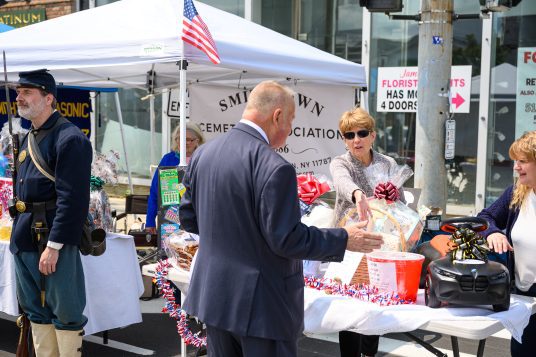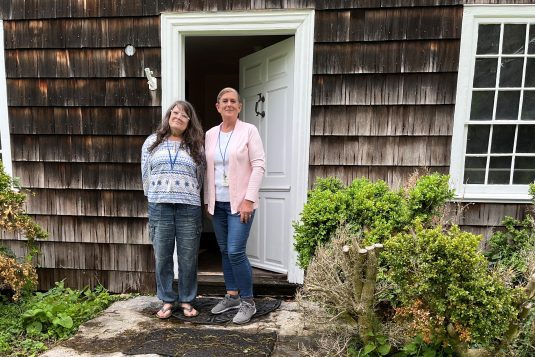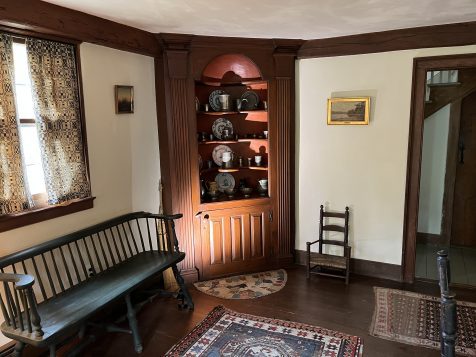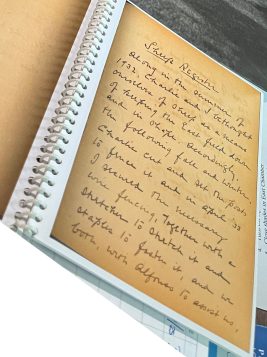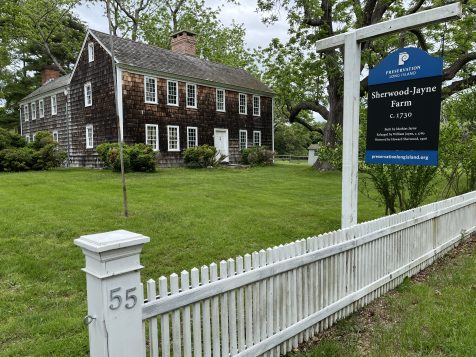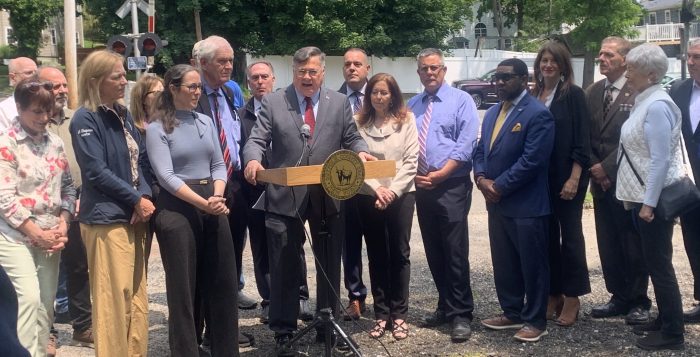By Sabrina Artusa
While the Lawrence Aviation Industries site in Port Jefferson Station is clean and cleared from the superfund registry, the atmosphere around the prospective rail yard is murkier than ever.
The MTA has yet to secure the 40 acres allocated to the rail yard, which would be crucial to electrifying the Port Jefferson line. As the June 30 deadline approaches, local officials and environmental leaders met at the site on June 2 to urge the MTA to sign and for Governor Kathy Hochul to apply further pressure. Brookhaven bought 40 acres to preserve as open space and the county bought the other 40 acres to use as a solar farm.
“This is a community grafted and supported plan that elected officials from all levels of government have worked very hard on for 15 years now,” said Adrienne Esposito of the Citizens Campaign for the Environment. “And we are in the last few days to make it successful and get the job done.”
The Setauket–Port Jefferson Station Greenway will have to be rerouted in order for the MTA to proceed with the rail yard. Since the DOT owns that land, they have to sign an agreement with the MTA and work out an easement between them.
Romaine said the DOT is hesitating in giving the MTA the go-ahead. “Let’s not pass this up because the DOT is blocking this,” Romaine said. “Let’s everybody row in the same direction…let’s electrify this line.”
Assemblywoman Rebecca Kassay is pushing legislation to advance an easement agreement between the DOT and MTA.
The bill, currently being reviewed by committee, ensures the DOT will not be prevented from rerouting the Greenway. Further, it states that if the DOT intends to expand Route 25A, as they originally intended, the easement would not impede that move as a bridge could connect the Greenway instead.
“The DOT is authorized and directed to work with the MTA and other interested particles and/or owners of real property surrounding the Greenway to negotiate and execute the…easement within six months after the effective date of this act,” the bill reads.
After the event at the Lawrence Aviation Site, Kassay said the DOT reached out to her with suggested amendments.
“New York State has lofty green energy goals, lofty goals for decarbonization and I can not do enough to press upon them how vital this opportunity is to make more green the MTA,” said Kassay, who has been pushing for assistance at the state level. “This is not an opportunity we can lose.”
An updated, electrified line is something residents from Port Jefferson to Smithtown can benefit from: fewer breakdowns, cleaner air and a smoother ride. The train can be used by Stony Brook University students and can provide redevelopment opportunities.
“In order to build housing, and to put that housing where it makes sense for rail service, this could only help. For the economic development that is needed, this could only help,” said Brookhaven Supervisor Dan Panico.
The Suffolk County Landbank is selling the land to the MTA for $10. Sarah Lansdale, the Suffolk County commissioner of economic development and planning, said the MTA cut off communication with the landbank last September.
Further, she said that the landbank submitted two FOIL requests asking for records specifying any plans of potential development for the area. The DOT declined possessing such records.
“The Department has no plans or designs for the reconstruction of NY25A from its current location to the property that was acquired where a section of the Setauket–Port Jefferson Greenway trail exits near Sheep Pasture Road and where Suffolk County and the LIRR are proposing to create a rail yard,” a March 24 letter from Department of Transportation Deputy Counsel Norman W. Kee to Suffolk County reads.
After not receiving the requested records, Suffolk County Department of Economic Development and Planning submitted an appeal.
The June 30 deadline is about a year from the first deadline in 2024. Two extensions later, if the MTA and DOT do not reach an agreement and the MTA does not purchase the property, the project cannot move forward.
“We are going to show her how it’s done,” Esposito said as she held up red tape for Romaine to cut.


